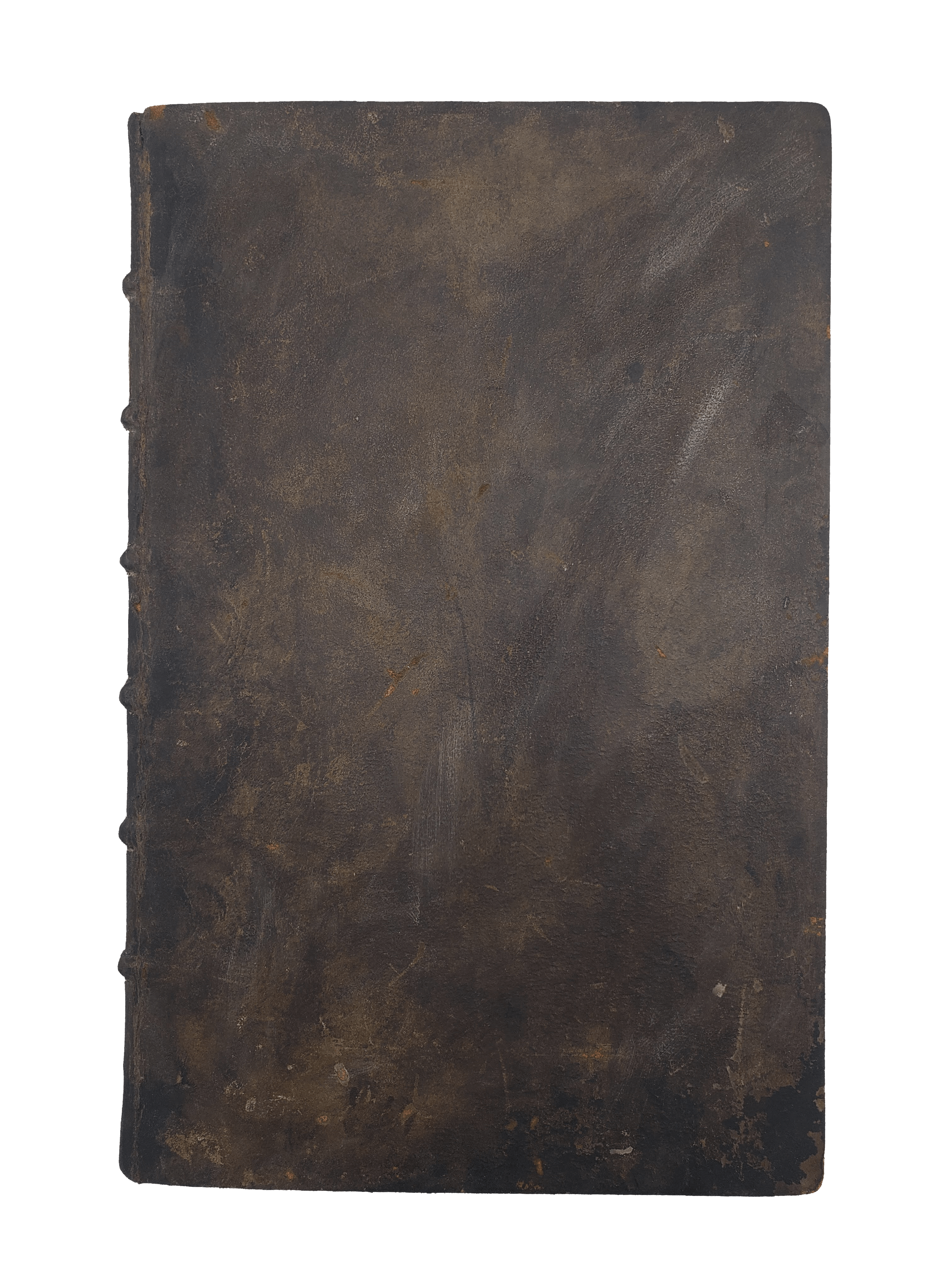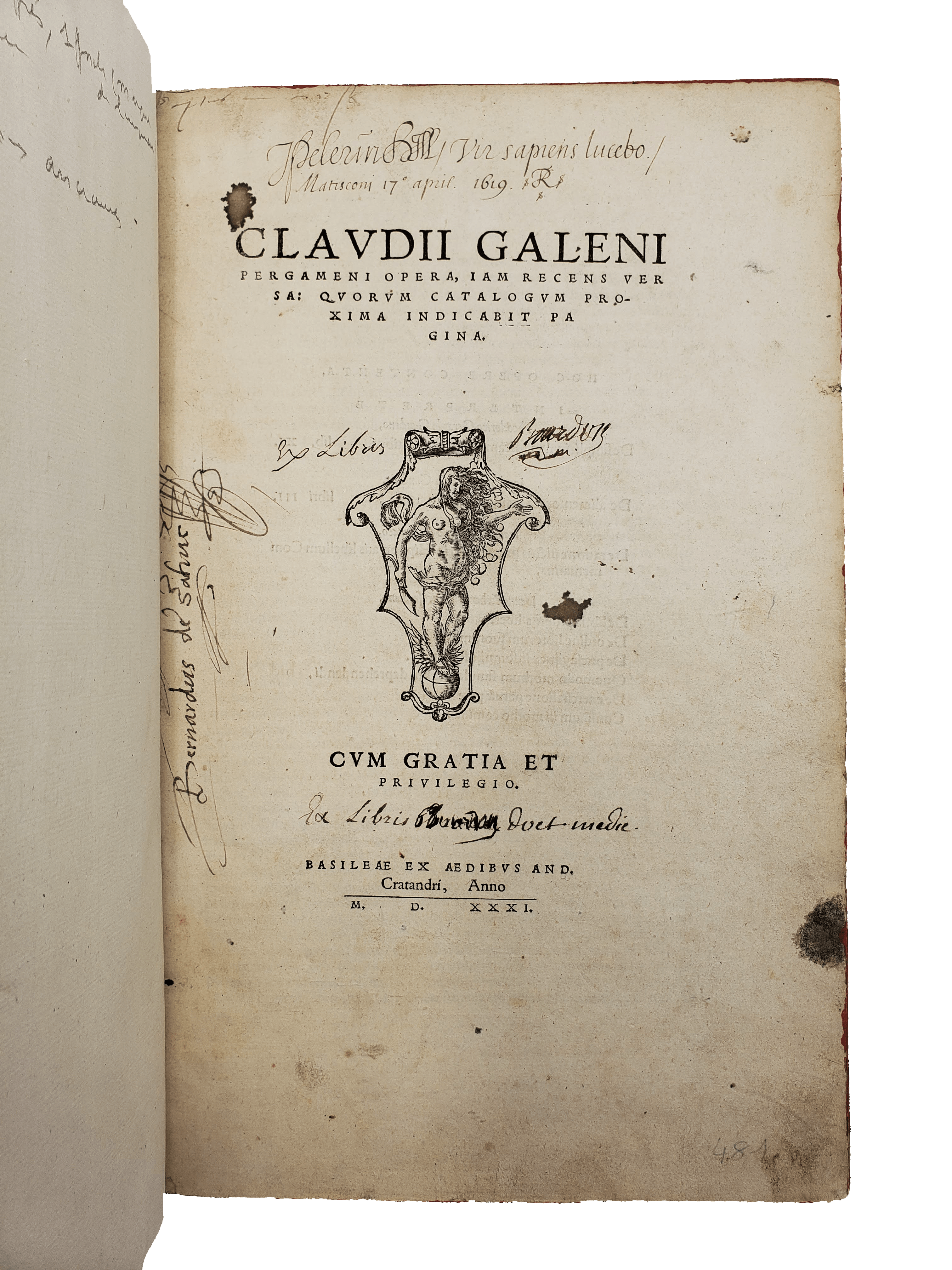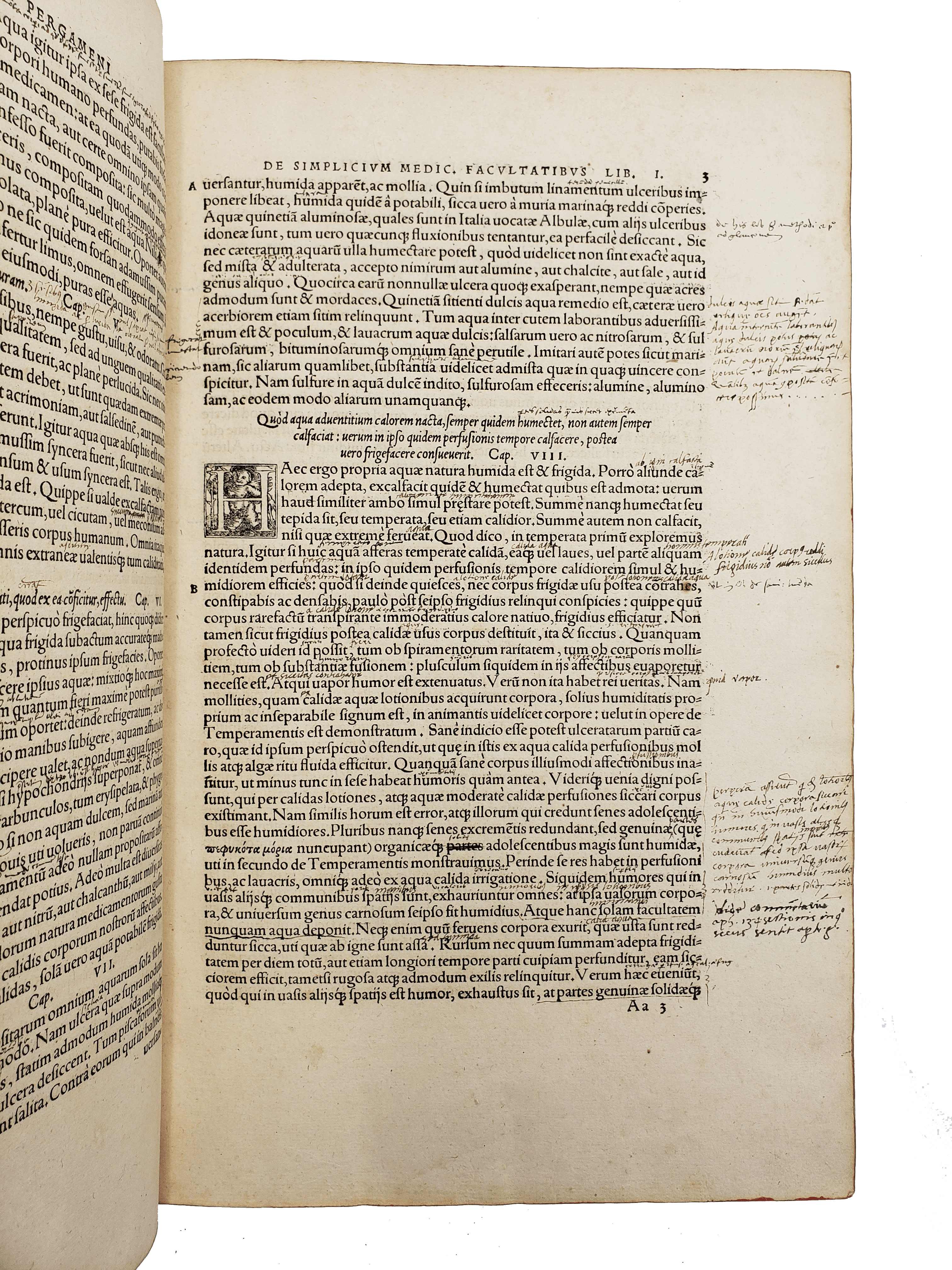GALEN.
EXTENSIVE EARLY ANNOTATIONS
Opera.
Basel, Andreas Cratander, 1531.£3,750.00
Folio. ff. [6], 172 [i.e., 171], [1]. Roman letter, little Italic or Greek. Woodcut printer’s device to title and last recto, decorated initials. Uniform very light browning, title margins a little dusty, marginal ink splash to Ii6, last leaf with printer’s device mounted on blank verso. A good copy in late C17 sheep, gilt label to spine, a.e.r. C16 ms autograph ‘Bernardus de Sahuc’, ms ‘Pelerin (?) / Vir sapiens lucebo / Matisconi [Macôn] 17 April 1619 R’, and two later ms ex-libris to title (both doctors), extensive marginal ms annotations in at least two C16 hands.
A scarce early edition of Galen’s works, including unusual ones like his auto-bibliographies, with numerous early annotations. The titlepage autographs indicate continuous medical use from the C16 to the beginning of the C19.
Together with those of Hippocrates, the works of Galen (129-200/216AD), Greek physician and surgeon in the Roman Empire, shaped the development of Western medicine. This edition comprises nine Latin translations by Gerardus Gaudanus, Martinus Gandavus, Johannes Andernacus and Johannes Fichardus. One of Galen’s most famous works, ‘De simplicium medicamentorum’ is devoted to techniques for the preparation of natural medicines, and how to determine their effects, with a catalogue of hundreds of herbs and minerals, and their properties. ‘De alimentorum facultatibus’ discusses the qualities and medical properties of kinds of food, including corn, polenta, pulses, hop, fenugreek, sesame, and cannabis seeds, as well as fruits, meat and vegetables. ‘De ratione victus privatorum’ examines the best kinds of food for the elderly – on the biological and physiological definition of which he slightly disagreed with Hippocrates – with adaptations according to the ailments they might suffer from. ‘De libris propriis’ and ‘De ordine librorum suorum’ are Galen’s two bibliographical works on the titles and order of his own books. He divides them by subject (anatomical, therapeutical, commentaries on Hippocrates, etc.) or by the scholar or school against which they were written (e.g., Erasistratus, the Empirics). ‘De praesagiis’ examines dreams and their causes and themes or subjects. ‘Quomodo morbum simulantes’ is probably the earliest work devoted to those who simulate illnesses and how physicians can tell simulation from real symptoms. ‘De exercitatione parvae pilae’ is concerned with exercise and health, whilst ‘Consilium in morbo comitiali’ focuses on epilepsy. The two early annotators – one being the C16 French physician Bernard de Sahuc, the other the early C17 physician Jacques Pelerin, in Macôn – were especially interested in the first two works, on natural remedies and food. They glossed or summarised individual sentences on therapeutic properties, so as to highlight them for reference. Occasionally, they added quantities for recipes or alternative Latin names for the herbs mentioned. A very interesting copy of this early edition, including unusual works by Galen.
Durling 1788; Durling, Census (Galen), 1531.6. Not in USTC or Wellcome.




